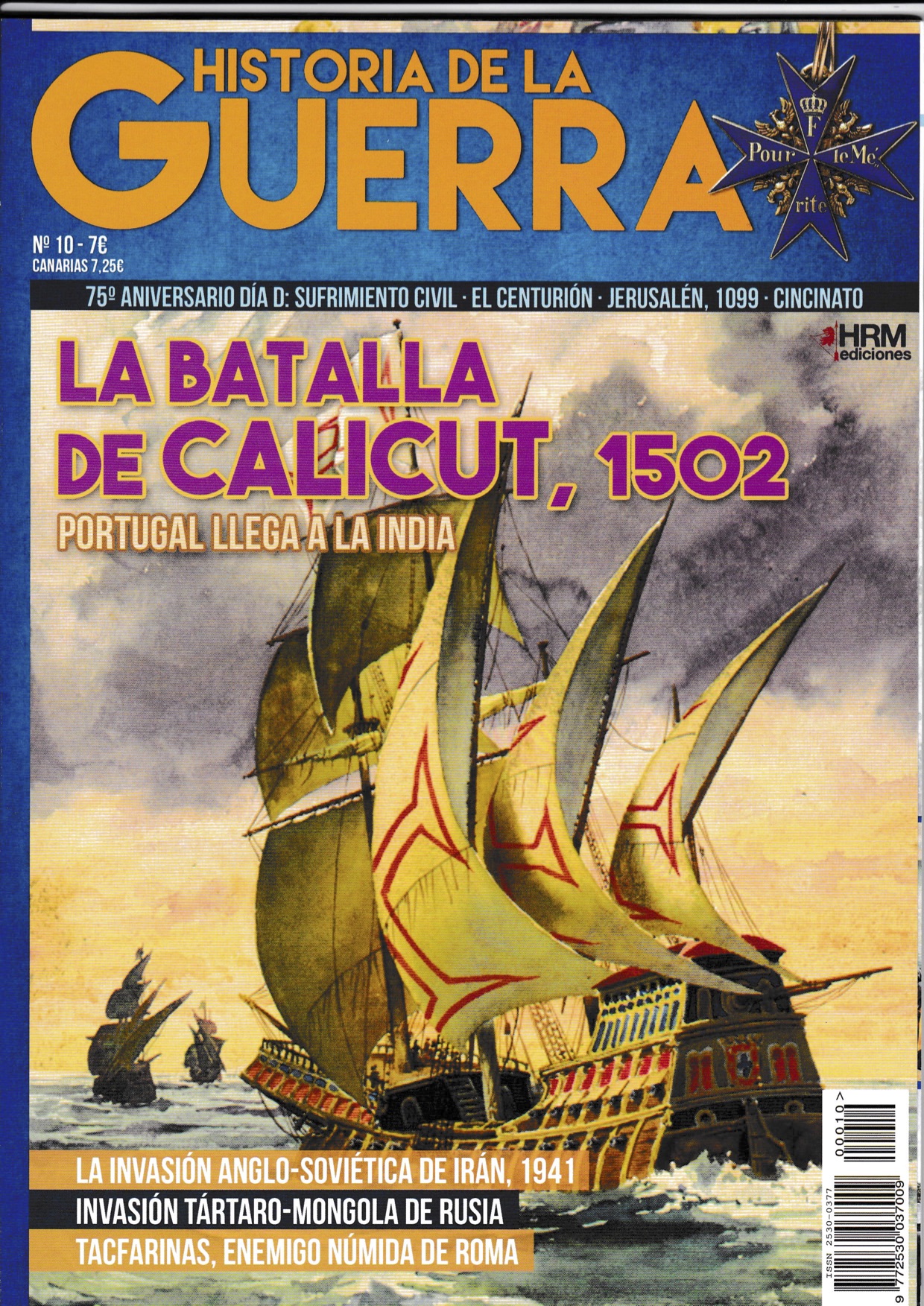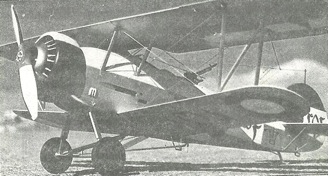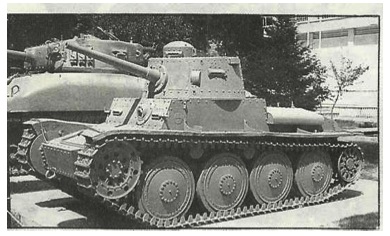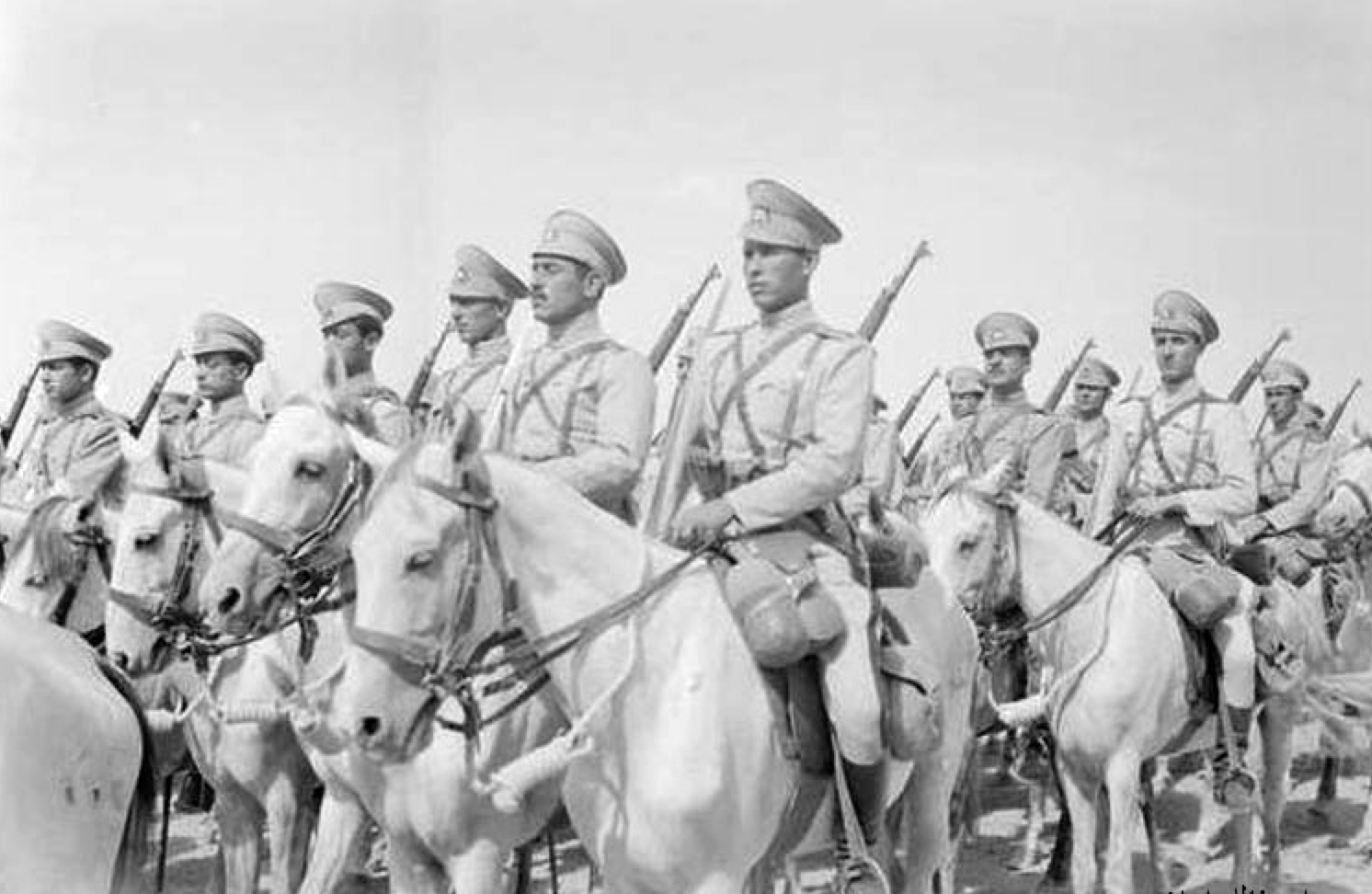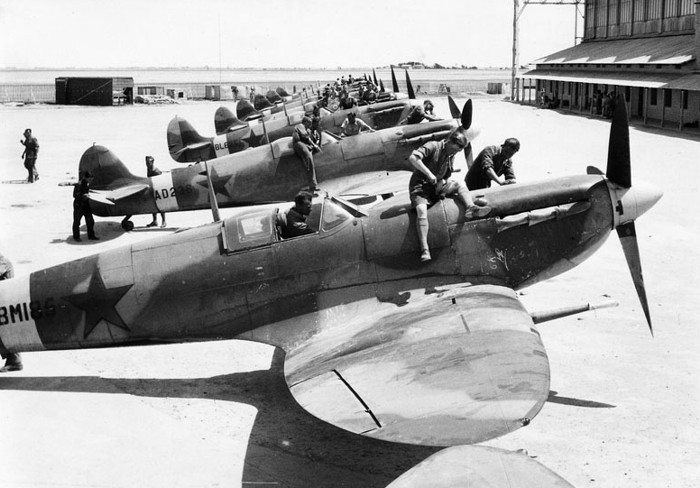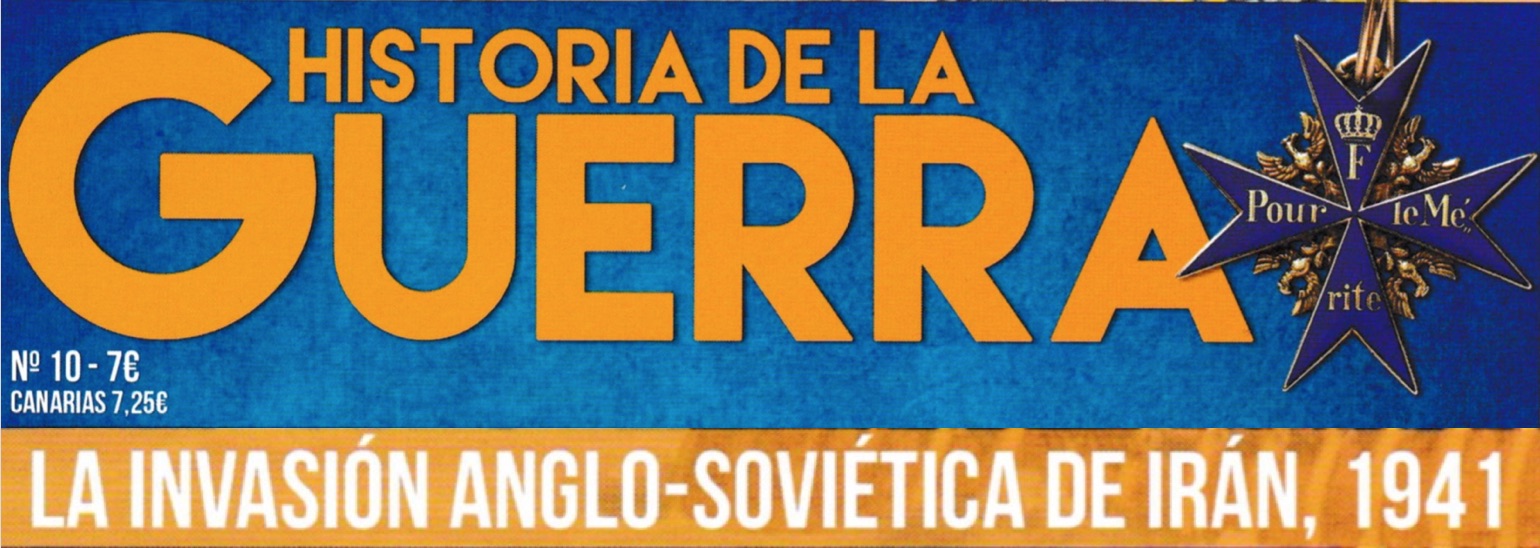The prestigious Spanish military journal “Historia de la Guerra” has published an article on the 1941 Anglo-Soviet Invasion of Iran by Kaveh Farrokh and Javier Sánchez-Gracia (click the link below in Academia.edu for downloading the entire article):
Farrokh, K., & Sánchez-Gracia, J. (2019). La invasion Anglo-Sovietica de Iran 25 de Agostico-17 de Septiembre de 1941 Cover page of the 10th edition of the Spanish military history journal “Historia de la Guerra” published in the early 2019. The article provides an examination of the Iranian army (see 1900-1921 and 1921-1941, artillery: 1900s-1941 and armored vehicles in 1921-1941), Air Force and Navy. Iranian Hawker Fury no. 482 before the war (Photo Source: Matofi, A., 1999, Tarikh-e-Chahar Hezar Sal-e Artesh-e Iran: Az Tamadon-e Elam ta 1320 Khorsheedi, Jang-e- Iran va Araqh [The 4000 Year History of the Army of Iran: From the Elamite Civilization to 1941, the Iran-Iraq War]. Tehran:Entesharat-e Iman, p.1055). Just weeks after the ceasefire (August 28, 1941), two of these from the Qalemorqhi 1st Air Regiment took on five Soviet Polikarpov I-16 fighters on September 17, 1941 over the Caspian Sea. One plane flew by Captain Vassiq was shot down and crashed into the Caspian Sea. The other flown by Wing Operator Shushtari ran out fuel and crashed into the forests of northern Iran (Cooper & Bishop, 2000, pp.12-13). The article also provides an examination of the Iranian military with respect to equipment, organization and development since the early 20th century. The TNH light tank of the Iranian army first delivered in 1937. Note the Sherman tank (delivered to Iran after World War Two) behind the TNH (Photo Source: (Picture Source: Matofi, A., 1999, Tarikh-e-Chahar Hezar Sal-e Artesh-e Iran: Az Tamadon-e Elam ta 1320 Khorsheedi, Jang-e- Iran va Araqh [The 4000 Year History of the Army of Iran: From the Elamite Civilization to 1941, the Iran-Iraq War]. Tehran: Entesharat-e Iman, pp.1134). Thanks to inept organization and logistics, the bulk of Iranian armored vehicles were idly sitting in Tehran, instead of the critical north, west and south. This was one of the factors that greatly facilitated the 1941 Anglo-Soviet of Iran. Iranian cavalry in the 1930s (Source: lead-adventure.de). Despite the procurement of armored vehicles and their integration into the Iranian army, cavalry remained Iran’s prime asset for rapid strikes, shock and maneuver on the battlefield (Ward, 2009, p.142). One of the few successes scored by the Iranian army against the Anglo-Soviet invasion of late August 1941, was when an Iranian cavalry patrol forced back an advancing British force near the Paltak pass (in the Kermanshah area, western Iran) on August 27, and took numbers of them prisoner. A detailed analysis is outlined of the factors leading to the rapid Anglo-Soviet advance into Iran due to Iranian army’s shortcomings at the time, notably logistics, nepotism, etc. Resistance against the Anglo-Soviet occupation is also discussed. “To Russia with Love”: British Supermarine Spitfires in Abadan in 1943 being prepared for delivery to the Soviet Union (Source: Lend-Lease Air Force – photo originally submitted by C-F. Geust for Lend-Lease Air Force). While often ignored by both Russian and Anglo-American historians, a major reason why the allies invaded Iran (despite her declaration of neutrality – as she had also in World War One) is that the Western allies wanted to rush as much equipment to the Russo-Soviets as possible to prevent its collapse in the face of Germany’s Operation Barbarossa against the Soviet Union. By December 1941, German forces could see the spires of the Kremlin, but this would be the limit of their advance in Russia. 